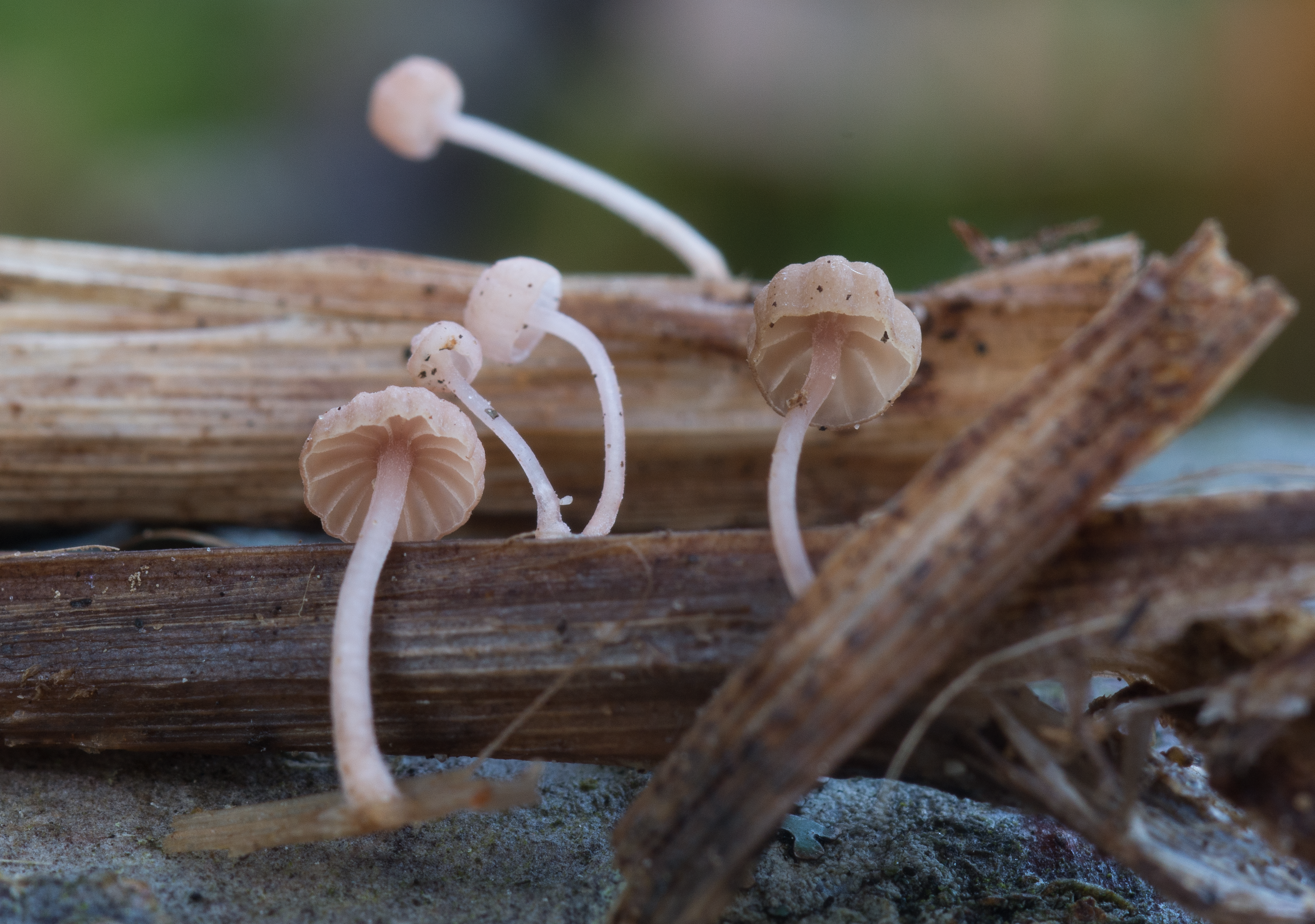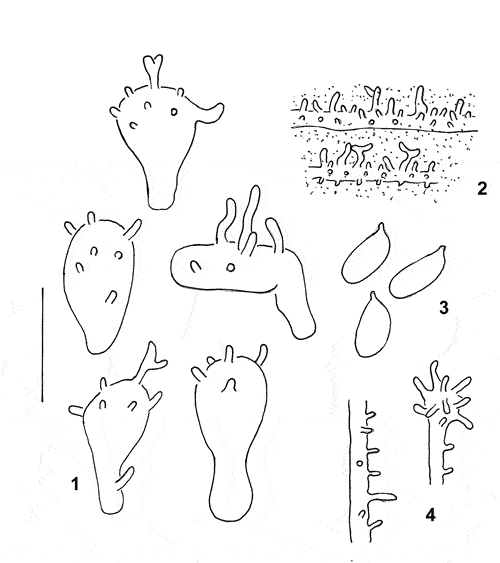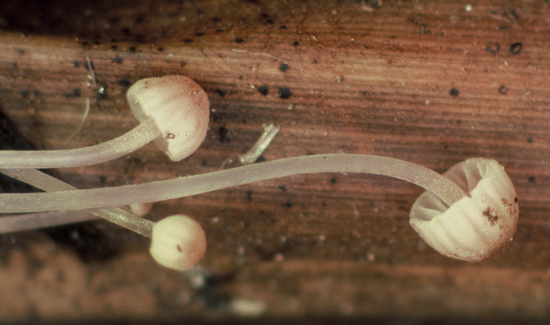Mycena tubarioides
Mycena tubarioides
Description
1. Cheilocystidia, 2. Hyphae of the pileipellis, 3. Spores, 4. Hypha of the cortical layer of the stem with terminal cell.
Cap 2-5(-8) mm across, hemispherical, parabolical, conical, broadly campanulate to almost plane, ± depressed or with a small papilla, sulcate, translucent-striate, not hygrophanous, pruinose or finely puberulous, glabrescent, pink to lilaceous pink, darker at the centre, with age brownish beige with no traces of pink. Gills 7-11 reaching the stem, broadly adnate to subdecurrent, pale pink to whitish; the edge slightly elastic, white-pruinose. Stem 7-18 x 0.2-0.7 mm, cylindrical, equal or somewhat wider above (the base sometimes a little thickened), entirely pruinose, glabrescent gor the greater part, pale pink or whitish with a pink shade; attached with a whorl of fairly few radiating, white fibrils. Odour none. Basidia 24-32 x 7-12 µm, clavate, 4-spored, with sterigmata 3-6 µm long. Spores (9-)9.8-14 x 4-5(-5.5) µm, Q = 2.3-3.1, Qav ˜ 2.8, elongated pip-shaped, smooth, amyloid. Cheilocystidia 13-30 x 5-13 µm, forming a sterile band, embedded in gelatinous matter and hard to detect, clavate, covered with rather few to fairly numerous , more or less evenly spaced, simple, occasionally branched, cylindrical excrescences 1.5-10 x 1-2 µm. Pleurocystidia absent. Lamellar trama dextrinoid, vinescent in Melzer’s reagent. Hyphae of the pileipellis 2.5-4 µm wide, embedded in gelatinous matter, smooth to densely diverticulate, with simple to branched excrescences 0.5-8 x 0.5-1 µm. Hyphae of the cortical layer of the stem 3-4.5 µm wide, diverticulate, with simple to branched excrescences 1-6 x 1-2 µm, terminal cells 5-9 µm wide, clavate, diverticulate. Clamps present at all tissues.
Ecology and distribution
Cespitose or in small groups on decayed leaf sheaths of Juncus, Typha, Carex and stems of Scirpus in wet places. Autumn. Rare in Norway, but possibly overlooked.


